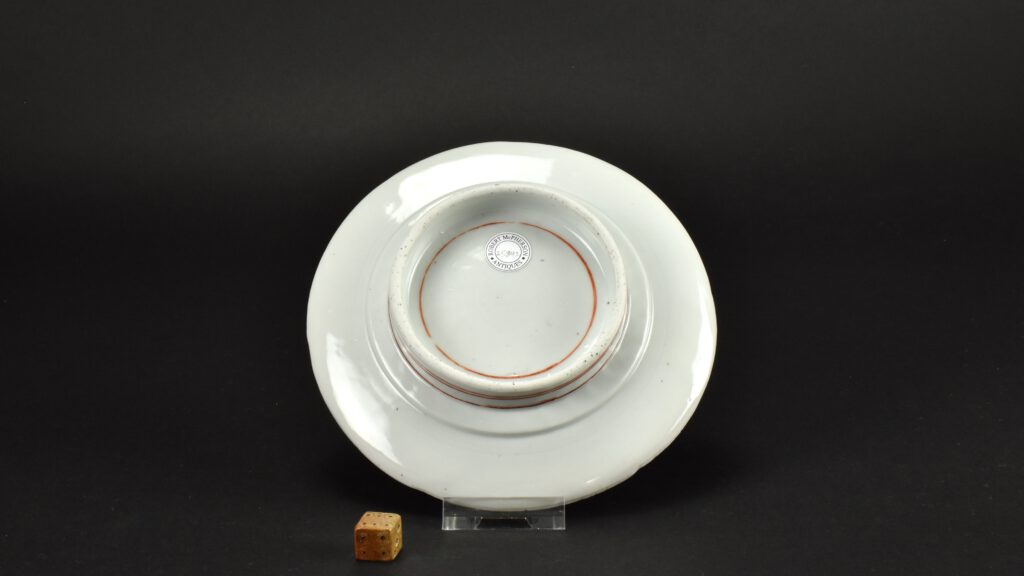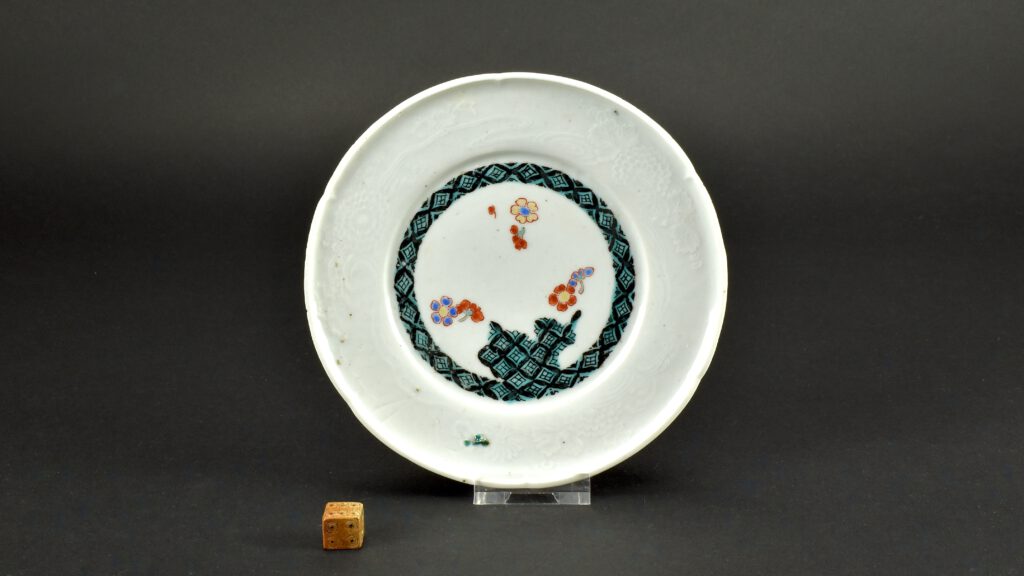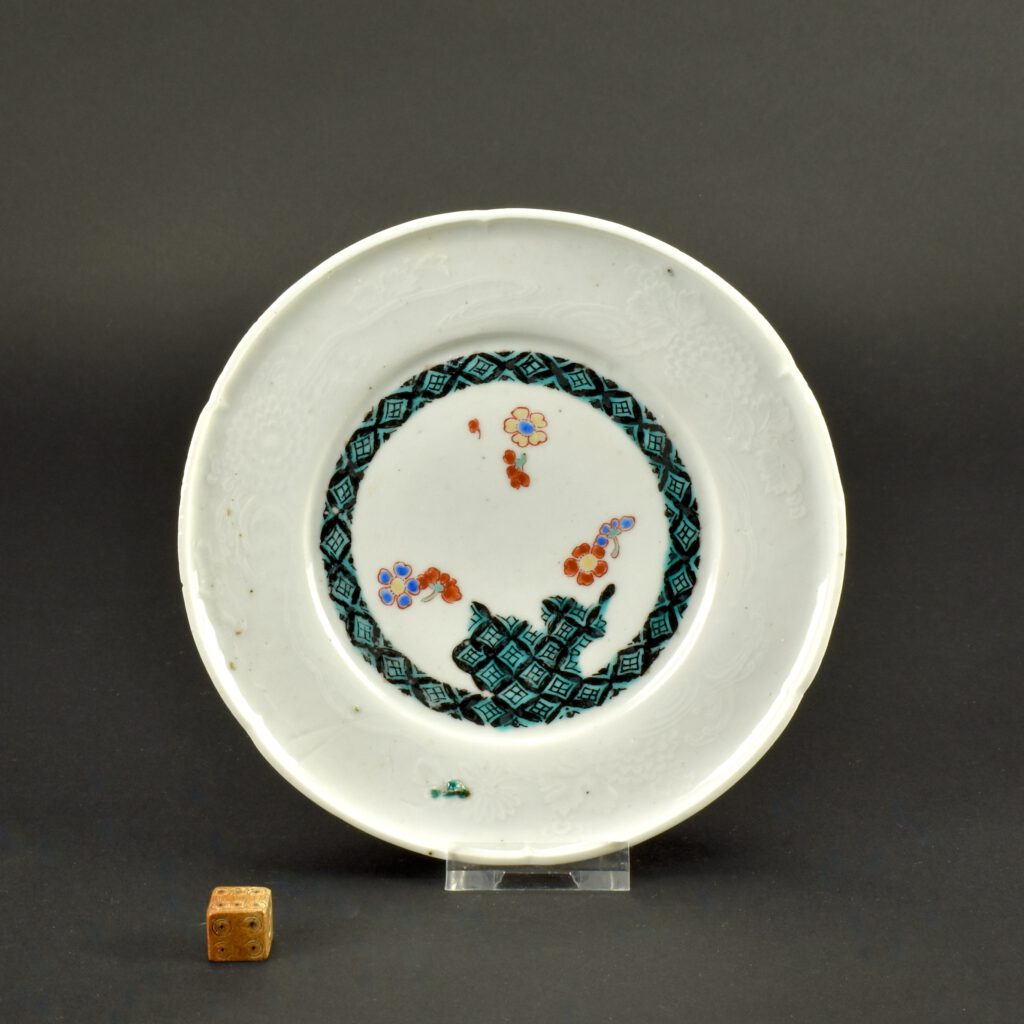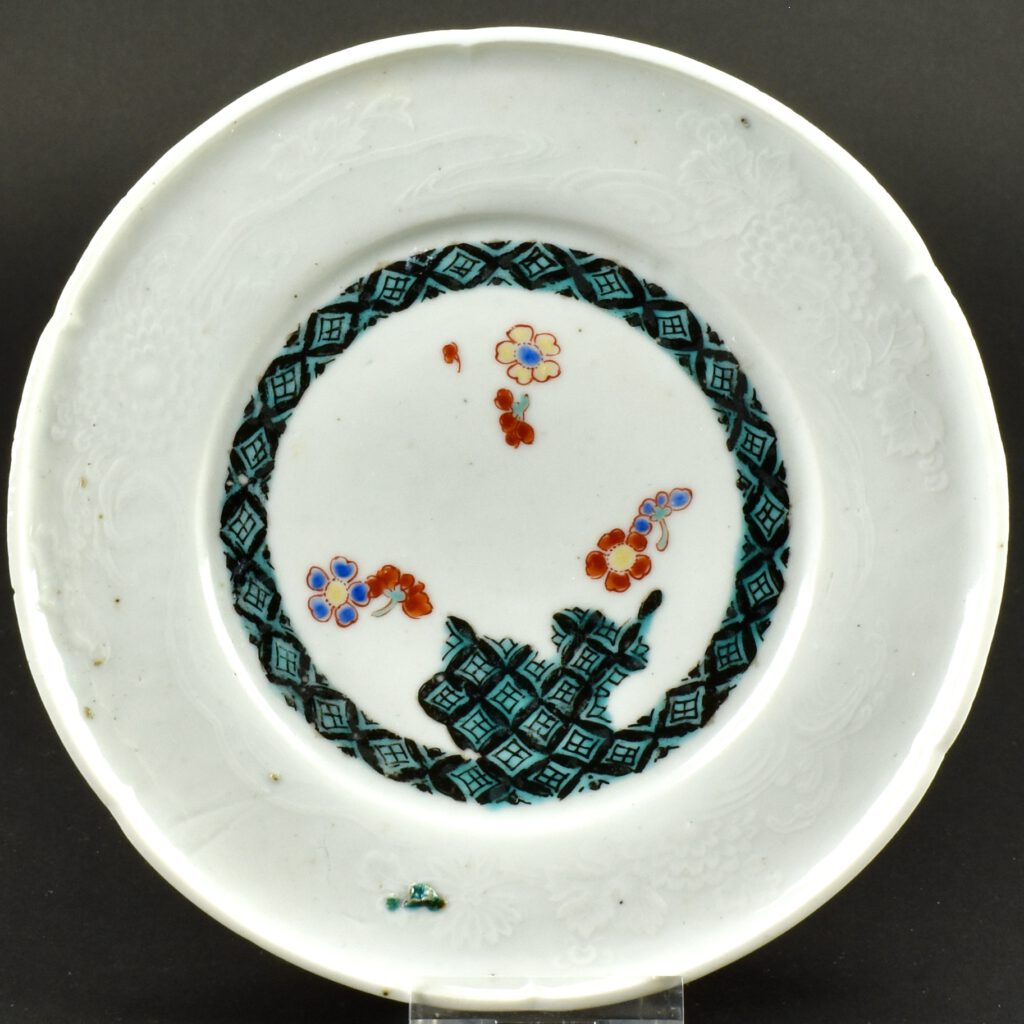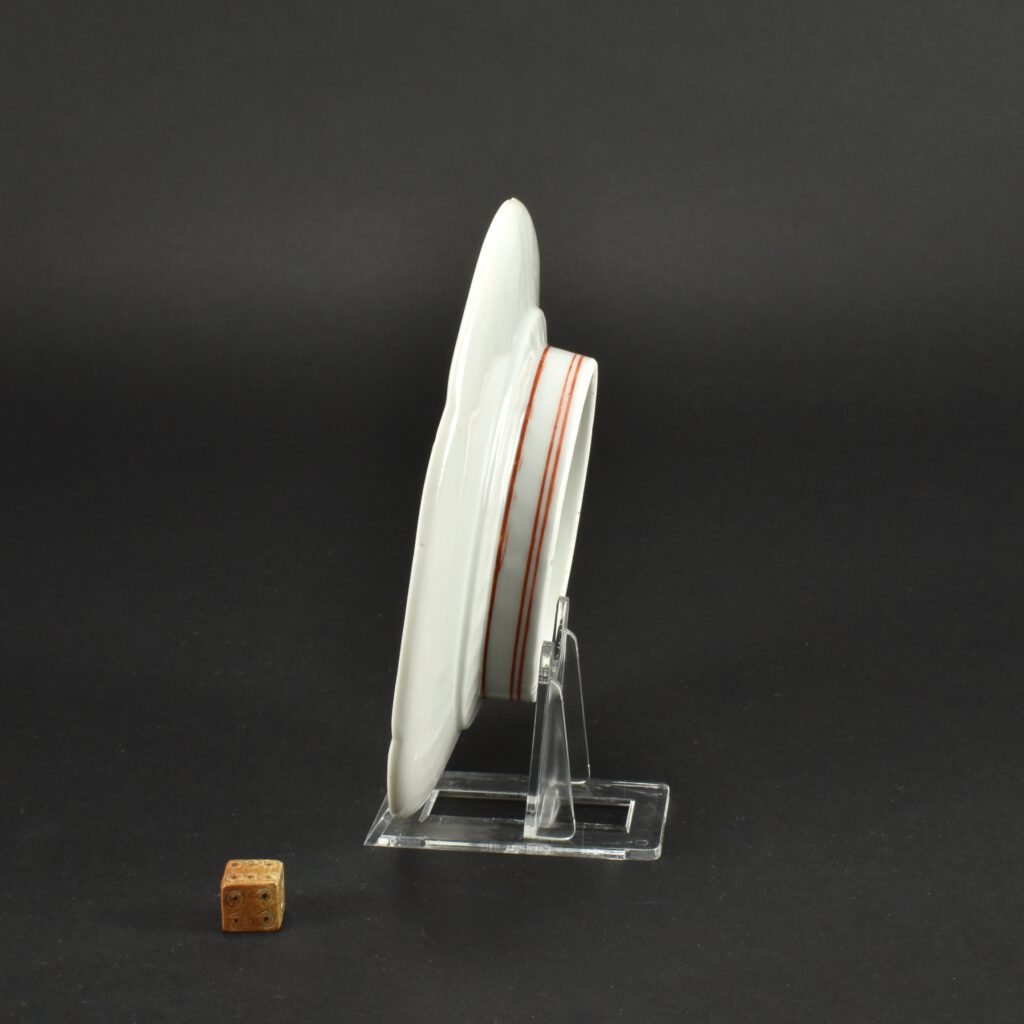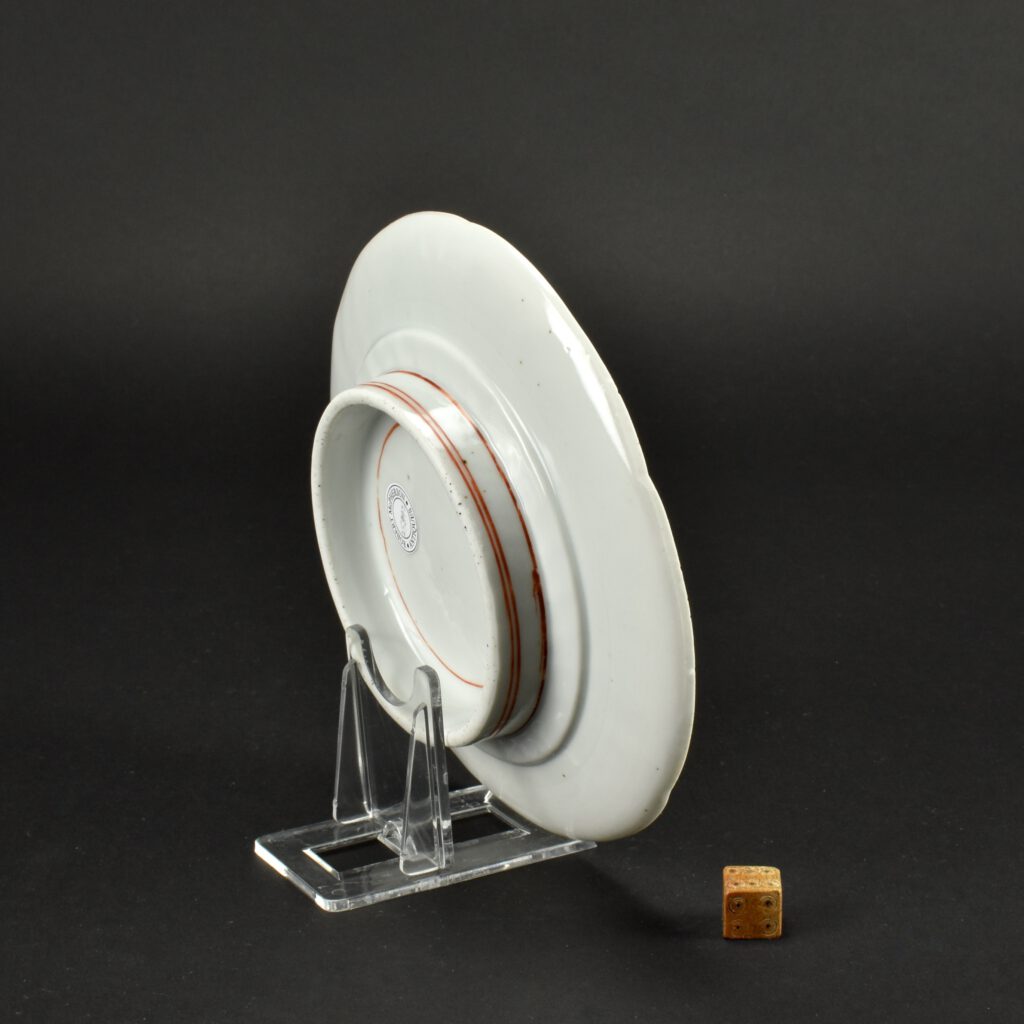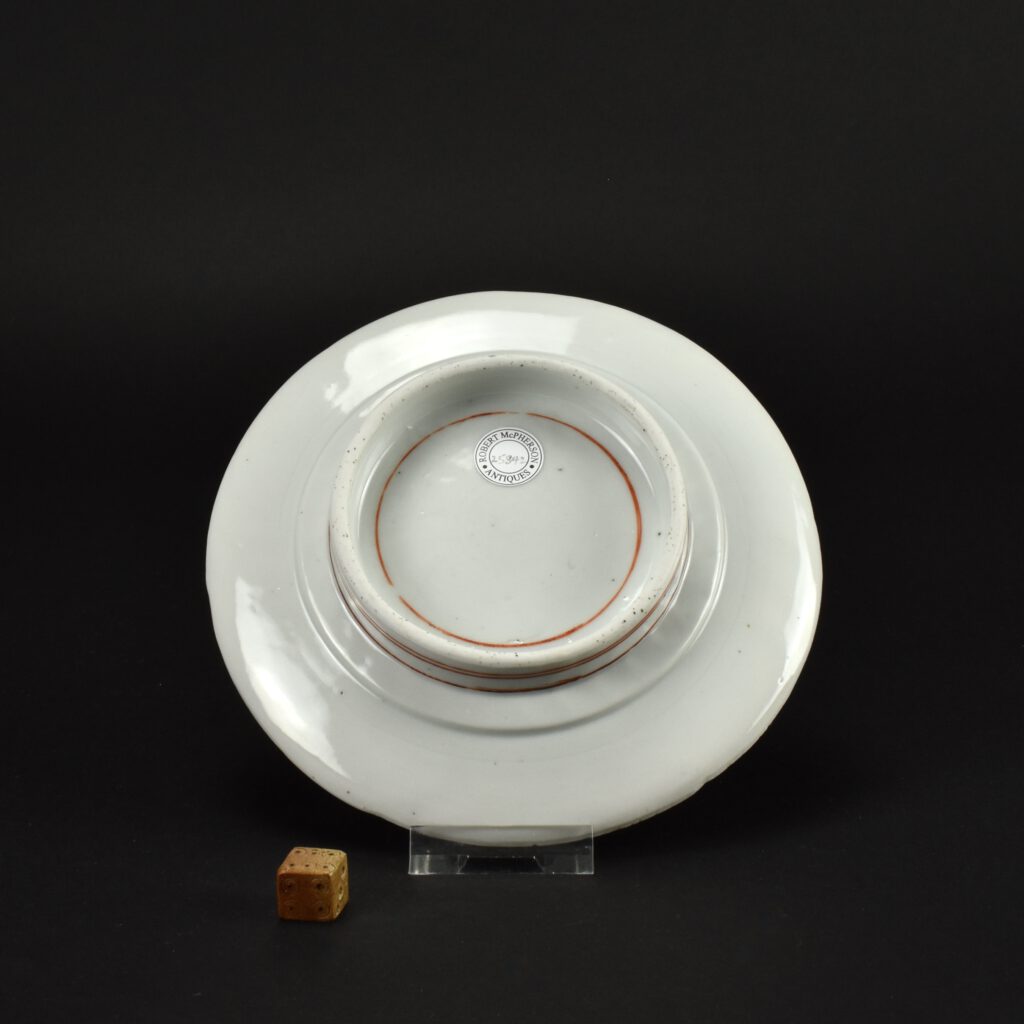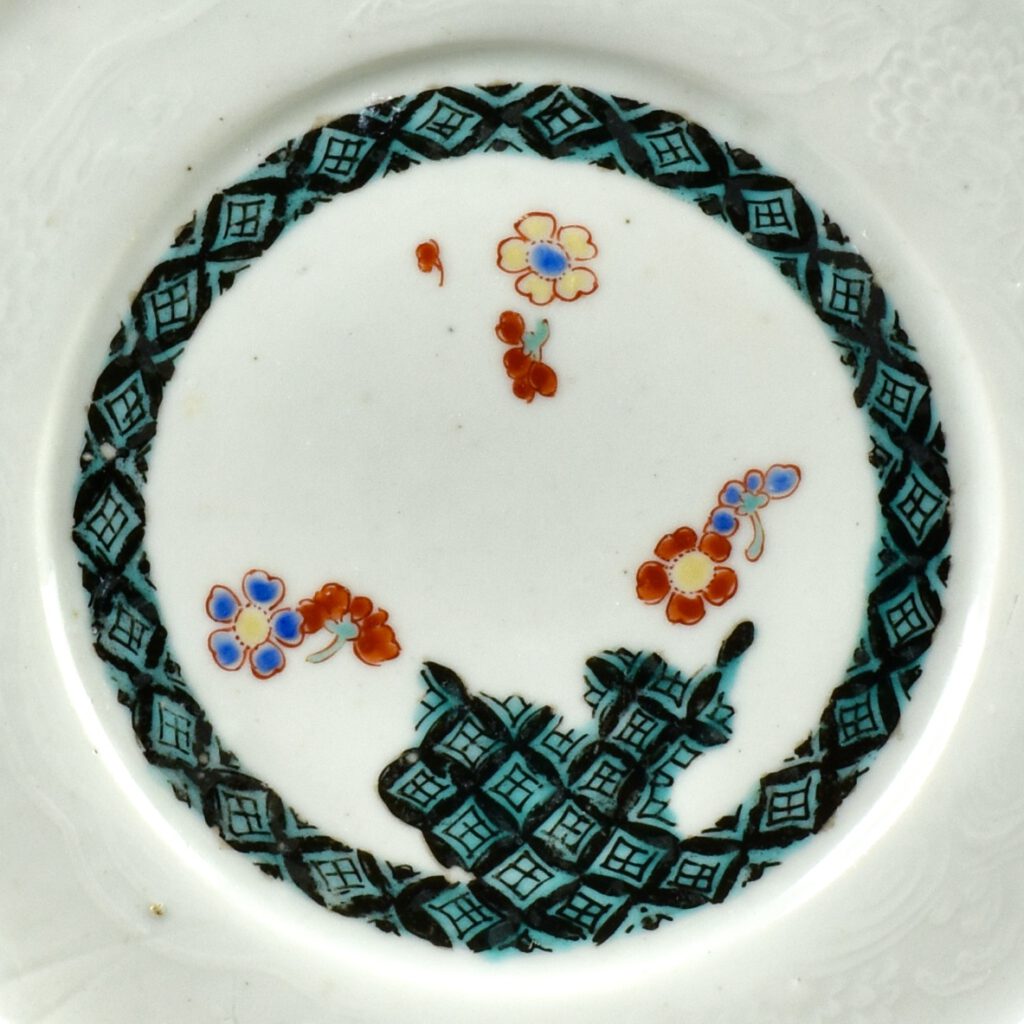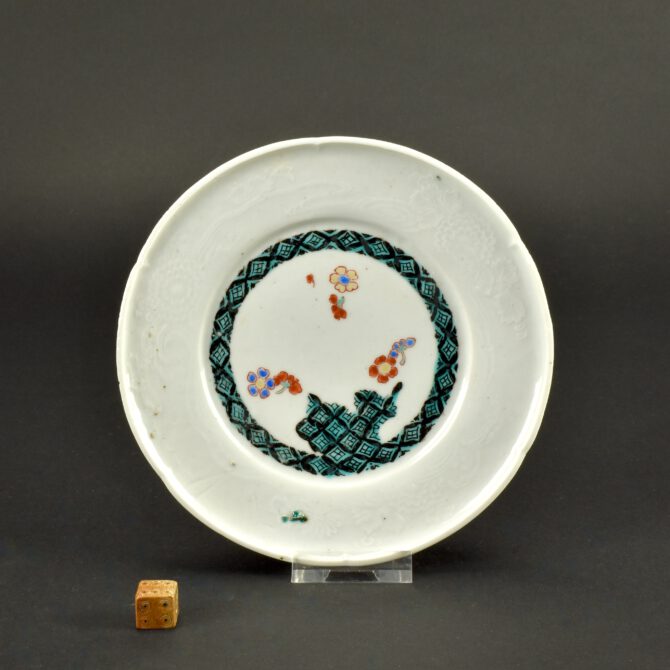
Unusual Moulded 17th Century Japanese Porcelain Stand
An Unusual 17th Century Japanese Porcelain Stand, Ko-Kutani type, Arita Kilns c.1660-1680. This stand might well have been used for offering food. It sits on a thicker piece of clay that has a thick high foot. The indented border on the front of this piece is finely moulded with chrysanthemum among crashing waves, as well as a gentle stream. The enamel decoration to the centre is a curious mixture of what is associated with Ko-Kutanti (green and black) and Arita porcelain in the Kakiemon style (coloured flowers). Many of these style are interchangeable and don’t necessarily have links to any one kiln group. Because of this, enamel decoration of this period was referred to as “early enamels” by the late Dr. Oliver Impey. The design is of diaper pattern border, with what seems to turn into a jagged rock. There scattered flowers in iron red, green, blue and a mustard yellow. The concentric rings in red on the back are typical of Ko-Kutani type porcelain. The largest piece of kiln grit has been enamelled in green. This is typical of the Japanese, to be honest with mistakes, to highlight it and make it something beautiful.
RESERVED
- Condition
- In excellent, a few minute glaze frits, some kiln grit. The largest piece of kiln grit has been enamelled in green. This is typical of the Japanese, to be honest with mistakes, to highlight it and make it something beautiful.
- Size
- Diameter 14.9 cm (5 3/4 inches)
- Provenance
- N/A
- Stock number
- 25842
- References
- For a dish of this shape and design, catalogued as Shoki-Imari ware dated to 1610-1660 see : Imari and Nabeshima ware, from the collection Masayuki Yamamoto given to the Nezu Museum (Tokyo, Nezu Institute of Fine Art. 1998) page 29, plate 47.

